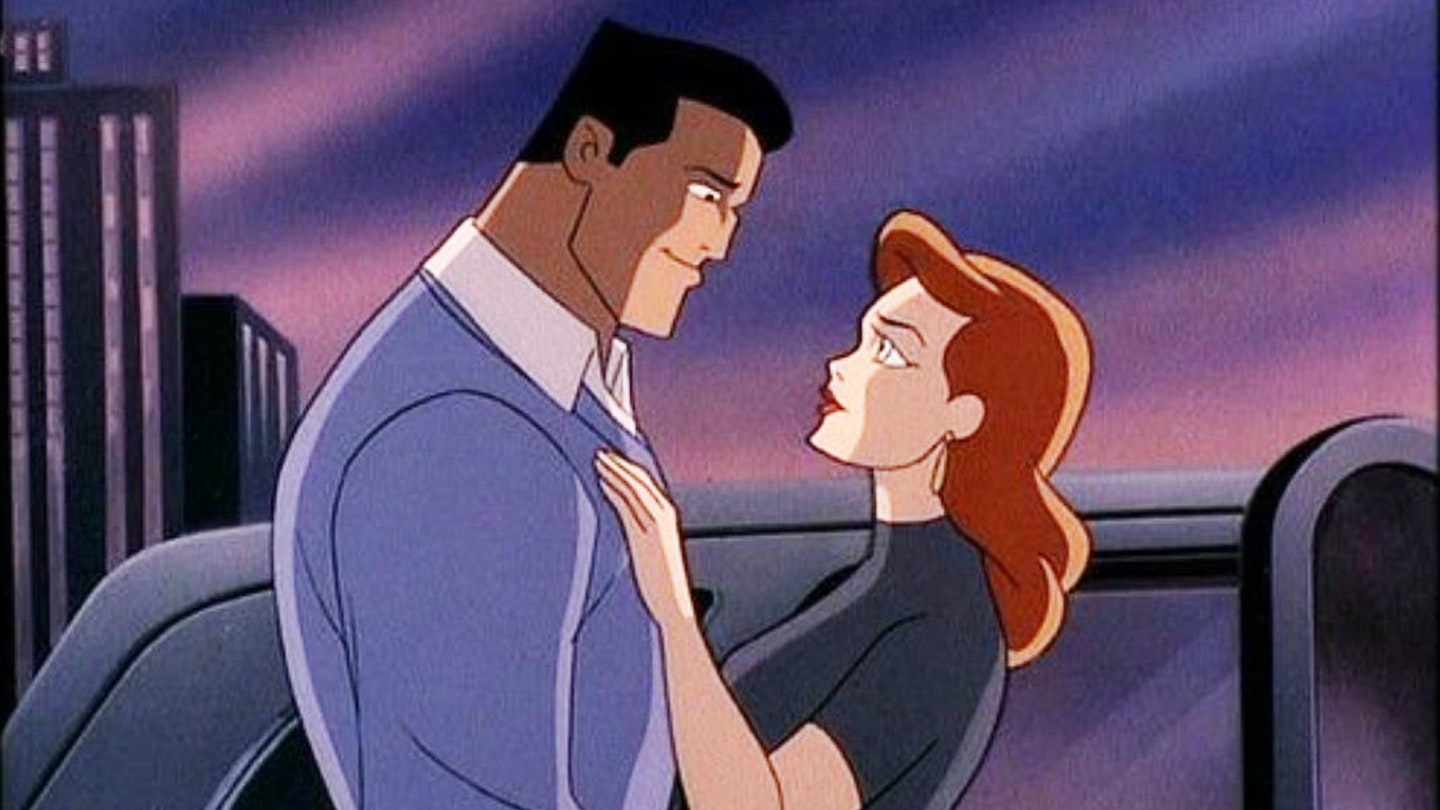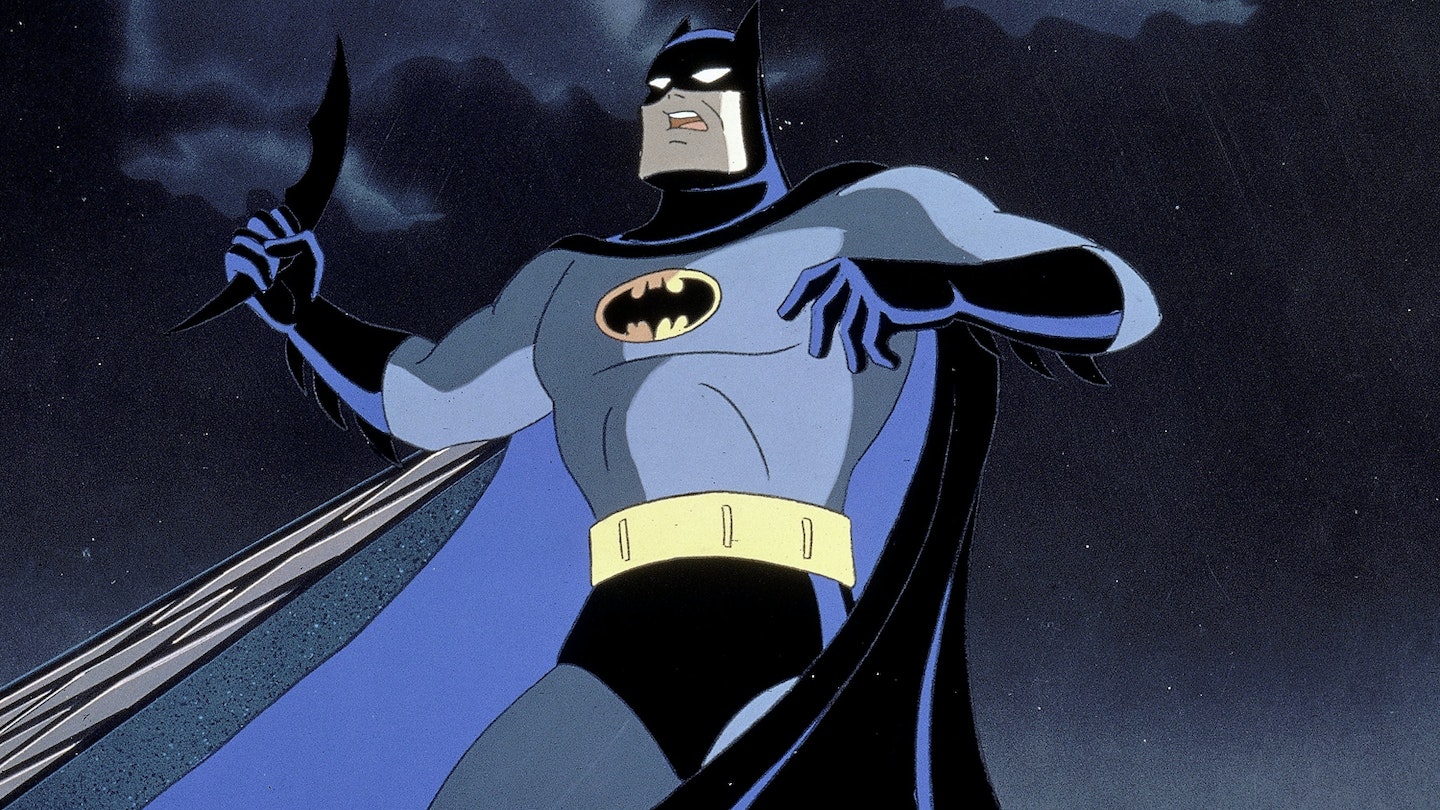Contains spoilers for Batman: Mask Of The Phantasm
What is the best Batman movie of all time? The fact that so many Bat-fans answer this question so differently speaks as much to the quality of numerous Batman films as it does to the malleability of the character. Leslie H. Martinson, Tim Burton, Joel Schumacher, Christopher Nolan, and more have all left their mark on Gotham’s Dark Knight, taking him from camp to broody and everything in between in stories that, at their best, remind us why Bob Kane and Bill Finger’s hero has been a mainstay of popular culture for 83 years and counting. But when you consider the deepest explorations of Batman’s essence – from his mission, to his skillset, to his code – it becomes clear that the 75 minute animated masterpiece Batman: Mask Of The Phantasm is the film most worthy of that title.
Directed by Eric Radomski and Bruce Timm, with a story by Alan Burnett (Batman: The Animated Series veterans Paul Dini, Martin Pasko, and Michael Reaves also have screenplay credits), the main narrative sees Batman investigate new, shadowy vigilante, the Phantasm, who is killing mob bosses all over Gotham. Concurrently, it uses flashbacks to tell the story of how Bruce Wayne completed his transition into Batman, and how close he came to abandoning his mission before it ever properly began. The former is a mystery that’s worthy of the World’s Greatest Detective’s skills, and also one that rewards repeat viewings. The latter doubles as a weighty, tragic look into Bruce’s psyche, and the best Batman love story ever told. Crucially, each storyline enhances the other.

The subject of a young Mr. Wayne’s affections is Andrea Beaumont (Dana Delany), a brilliant, wholly new character created for the film. Their first meeting is as morbid as it is fitting – she is talking to her dead mother at her gravesite, and Bruce is conversing with his dead parents – and the romance that blossoms out of that shared connection is no less believable for how quickly it ensues. Delany voices Andrea with a welcome assertiveness that makes the courtship that much more playful and witty, and the chemistry never feels forced. This is Batman’s “one hope for a normal life”, but it’s far more significant than the Batman-Rachel relationship in Batman Begins and The Dark Knight, because Andrea comes into Bruce’s life at a time when his nocturnal future is not yet certain.
It’s that uncertainty that leads to Phantasm’s most powerful scene. The unexpected happiness Bruce has found with Andrea leads him once again to his parents’ grave. But this time, he’s there to beg them to release him from the vow he made years ago on that terrible night in Crime Alley, even though he himself has always held that power all along. Andrea’s response ("Maybe they already have. Maybe they sent me.") both underlines her understanding of the vow’s importance and affirms her love for him. It’s a poignant, beautifully written and performed scene, and is more emotionally impactful than any moment in other Batman films.
The two ultimately agree to be married, and the location of the proposal scene – on the topside of what would come to be the Batcave – is a brilliant visualisation of the tug of war over Bruce’s destiny. A flock of bats escapes just as Andrea accepts the ring, a subconscious disapproval of the couple’s union. Behind door number one is an uninviting life full of darkness and vengeance, fuelled by the murder of his parents. Behind door number two is a happy life and the woman Bruce is “changing the plan” for. Alas, it’s not to be – Andrea’s own family issues mean she’s forced to leave Gotham unceremoniously, and Bruce is left alone and heartbroken.
What makes _Mask Of The Phantasm_ so powerful is the way Bruce Wayne’s past directly impacts Batman’s present.
It’s this that leads to Phantasm’s other signature moment: Bruce donning Batman’s cape and cowl for the very first time. There are so many little things that help make this instantly iconic – from Bruce holding out his hand for his cowl, to Shirley Walker’s thunderous score, to Alfred’s terrified reaction. But it's the scene’s tragic underpinnings that really stick with you. The first “I’m Batman” moment in a Batman movie is usually triumphant. In Phantasm, it’s not only wordless – it’s sad. And given more notes to play in these flashback sequences than ever before, actor Kevin Conroy proves just as proficient at voicing a lighter and more optimistic version of the pre-Caped Crusader Bruce as he is in embodying the intense brooding of a fully-fledged Batman.
What makes Mask Of The Phantasm so powerful is the way Bruce Wayne’s past directly impacts Batman’s present. The family issues that forced Andrea away from Bruce all those years ago are also what drives her back to Gotham – for she is the aforementioned mob-murdering Phantasm, exacting revenge for the killing of her father. Indeed, Bruce and Andrea are two sides of the same coin. But where Batman only teeters on the edge of the abyss every night he goes on patrol, Andrea succumbed to it when she herself turned to murder. It’s beautiful, tragic storytelling.

The already engrossing story ratchets up yet another level when the last crime boss standing, Sal Velestra (Abe Vigoda), foolishly turns to the Joker – the mob member who killed Andrea’s father – to take care of his problem. Batman’s arch-nemesis is only in the movie for approximately 12 minutes, but Mark Hamill proves why his take on Mr. J is definitive, making every single second count. He frequently goes from angry and menacing to darkly humorous, sometimes within the same line reading. And his Joker laugh – which has never been more maniacal than in Phantasm’s climax – is still the standard for all Clown Princes of Crime.
While many would claim the Joker-centric face-off at the end of The Dark Knight is the greatest conclusion to a Batman movie, Mask Of The Phantasm’s showdown between Batman, Phantasm and the Joker hits harder because of the similar, yet different paths Bruce and Andrea have taken to this moment – one is driven by justice, the other is driven by vengeance. It takes place at the Gotham World Fair, a location we visited in flashback earlier in the film when Bruce and Andrea go on a date. Back then, it was a shining beacon of a bright future for their relationship and Gotham. In the film’s conclusion, it’s a corroded ruin that doubles as Joker’s hideout. Desperate to save Andrea’s soul, Batman can only watch as the World Fair is blown to bits while the first woman he ever loved disappears along with Joker in a haze of smoke. That’s right: this animated kids’ movie (about a serial killer!) has no happy ending.

Beyond the Batman, Andrea, and Joker storylines, there’s still so much more that Phantasm has going for it. The police blame Batman for Phantasm’s crimes, and it leads to a tense chase through Gotham that has you thinking for a split second that the Caped Crusader may not survive the night. The late, great Efrem Zimbalist Jr. brings the sass as Alfred (“Why, you're the very model of sanity. Oh, by the way, I pressed your tights and put away your exploding gas balls,” is an especially good zinger) but also lands the moments when Bruce needs to hear some wise, comforting words. Special mention too must go to composer Shirley Walker, who bolsters her Batman theme with choral work, giving the film a cinematic heft that elicits chills both in the opening credits – the chants are actually the names of the show’s composers and producers, but sung backwards – and in the film’s final moments, when Batman pushes his personal pain aside to answer the call of the Bat-signal once more.
In 1993, there weren’t many cinemagoers who answered Phantasm’s call. Originally intended as a direct-to-video release, the film was rushed into cinemas on short notice that Christmas with limited marketing, only garnering a measly $5.6 million at the box office. But while that makes it the least successful Batman movie monetarily, its quality has not been equalled by any other Bat-film before or since its release, and nearly three decades later its fandom only continues to grow. Whether The Batman takes that crown will be up for debate, but Matt Reeves – and any other director lucky enough to be given stewardship of the Dark Knight – will have their work cut out for them.
READ MORE: 10 Comics To Read Before Watching The Batman
